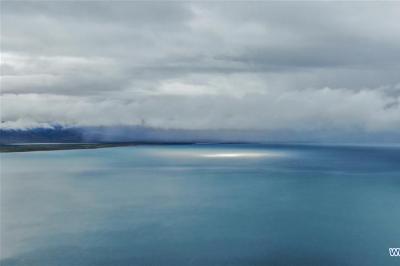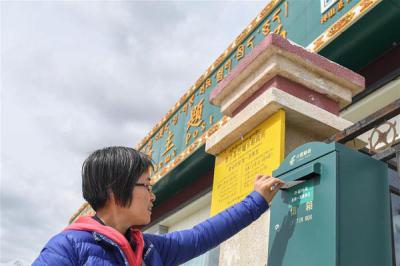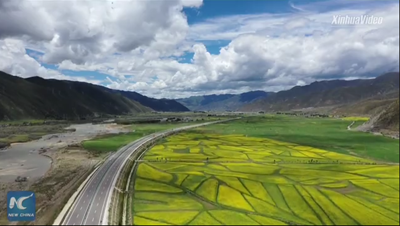Tibet is Writing the History of the Future
(France) Sonia Bressler
The history of the future. This is what we need to draw together as part of this forum. In 2016, I already said that Tibet was a crossroads. A crossroads of worlds, cultures, knowledge. Like Xinjiang, Tibet is an essential region for the Silk Roads.
a- To understand Tibet, we must get out of our Western habits
For years, my research has led me to think that we should not speak English (or any other Western language) to speak about Tibetan history. And it's even more obvious when it comes to imagining or talking about the future of Tibet. Drawing the future of Tibet must be in Mandarin and Tibetan. In a historical bilingualism that would lead us to more honor the inhabitants of this autonomous region of China.
There are innumerable stories here, innumerable faces ... It is of this living and moving diversity that we should speak. We should emphasize these ethnic diversities.
Tibet is and has always been the crossroads of the world. The place where all the roads intersect, where the cultures meet, where the high plateaus welcome the nomads like tired travelers after their crossing of the highest mountains of the world.
Tibet Autonomous Region has always been this miscegenation. It carries through its culture, its customs so different from one prefecture to another, all the mysterious stories of high peaks.
That's why, every time, I apologize because my progress in tibetan language or chinese is still weak. But, you know, I'm speaking throught my heart. And my heart is nourished by the meetings that I made here. By his women and men who opened their doors.
What I mean in this rather long introduction is that I willingly leave my western vision by returning here, where I find the crossbreeding of cultures and languages.
Western languages are certainly valuable, but they carry a long history of cognitive biases (or thought habit). The English language, like the French language, has contributed to making the highest summit in the world: Mount Everest. Making us totally ignore the name of Qomolangma. How can the meaning of "mother goddess of the universe" be reduced to this point in the name of a man? It is this story that I tell, most often to show, we Westerners are condemned to understand the fabulous history of China only through an "unequal language". In France, for example, we do not know, the fabulous destiny of this French who now lives in Tibet and helps clean the slopes of Qomolangma.
So it is you all who must show us these aspects of Tibet, show us, make us meet the figures of this modern Tibet.
Tibet is a living region, our Western language (especially mine) makes us blind, it carries, in it, the fantasy of a Tibet "Shangri-La". That's why I call it "unequal language" today. It does not help us understand the fabulous transformation of Tibet in recent years.
b- Drawing the future of Tibet
Together, we must draw and affirm the future of Tibet. It is therefore to get out of the "barriers" imposed by my "unequal language" to take into consideration the women, men and children who live daily in Tibet. To understand the future of Tibet is to position oneself in the immense potential of the Silk Road. Tibet has always been a place of convergence and exchange. The Silk Roads intend to restore this dimension, allowing the circulation of people and goods.
We must all contribute to this development in an intelligent way. How, together, we must allow new collaborations, we must bring out new ideas that allow everyone to flourish in this autonomous region. To draw this future, one must already understand the present. Let's take a few figures:
· In 2018, 32,000 people in the Tibet Autonomous Region are freed from poverty through the development of rural tourism.
· In 2018, more than 200 rural tourist sites were developed, attracting more than 9.35 million tourists and generating 1.2 billion yuan (178 million dollars) in revenue. The number of tourists to Tibet reached 33.7 million. These are impressive numbers. How to accompany such a development? By proposing new tools, or proposing points of vigilance? At the heart of Tibet's future: there is necessarily and first and foremost the protection of the environment.
Ecological issues are essential in Tibet. Here, more than elsewhere, China has to offer innovative and promising solutions. These solutions already exist in China, Xinjiang is already experimenting a lot. And we must put them forward:
· ecological agriculture, low in energy consumption; innovative;
· clean energies;
· environmental protection;
· ecological tourism;
· formation of the new generations to these questions (for example by creating schools that make their energy, vegetable gardens, etc.);
· create autonomous energy infrastructures ...
Ideas we certainly all have a lot. And collectively we can bring our thinking to China as a whole. To succeed in transmitting to the new generations the foundations of a new world is the commitment that we must all take here.
The Silk Roads (OBOR) are a crucial and even vital issue for future generations.
This project is a key to allowing the Tibetan region to preserve its history but also to transmit it.
The Silk Roads are a reflection of Tibet: a crossroads of knowledge, cultural diversity.
c- Tibet a crossroads: an observatory of knowledge
Finding the ancient traces of the Silk Road is an inestimable treasure, it shows how much Tibet must find this essential place in the rise of China. A crossroads is the promise of a meeting, an improvement in living conditions and openness to the world.
Lhasa is all that at once. A place of myths, a place of history, a place of interwoven utopias. But it is above all, a city nestled in the heart of the highest mountains in the world.
Tibet is all of that, this region of China is an overtaking, a suspension, a place of myths, crossroads of knowledge.
d- Tibet is a crossroads of cultural diversity
For me Tibet has the faces of all these men and women who live there, who work there and whom I had the opportunity to meet during my various travels. All have different stories, paths to which we should pay tribute. They are the strength, the bedrock of tomorrow's China. In particular, I think of Dawa Dondrup, director of Tibetan Indigenous Industry Co. Ltd. who built his business by working first on construction sites. I also think of A Nu, who was the village chief, who carried the Olympic flame, or Lup Sang Doj Jee who created his Tibetan institute of medicine so that Tibetans could always have a place of well-being, and listening.
It is to these men and women who make Tibet today that we must pay tribute, it is also through their success that we must understand that Tibet is a place of diversity. This diversity is the living force of this region. And it is in this sense that we must work together.
e- Tibet and the Roads of the future
During my first trip to Tibet in 2007, I took the "road of friendship" that took me to Nepal. Today, to come to Lhasa, I have the impression of having taken the "road of the future". It passes through the highest road tunnel in the world (at an altitude of more than 4,750 meters). This two-lane tunnel is 5.7 km long. It is part of the 400-kilometer long highway linking the regional capital of Lhasa and Nyingchi in southeastern Tibet. It was opened last April after four years of construction. This tunnel alone represents the effort of more than two thousand workers who have been able to cope with the challenges of nature in Tibet (cold, lack of oxygen, etc.).
This tunnel alone is a symbol of what are the Silk Roads (OBOR) for Tibet: a possibility of exchanges with the interior of China, with neighboring regions and bordering countries. They will contribute to a new economic, social and cultural momentum. They are the necessary junction for the creation of "this community of destinies" of which President Xi Jinping speaks. In Tibet, especially these roads embody harmony, collaboration. Today, Tibet is writing the future.
The Silk Roads are a bridge between diversities, among the fifty six ethnic families present in China. OBOR weave the thread of friendship. This project provide a better understanding of China. But OBOR is also a lesson in the world. The Silk Roads (throught OBOR) are the Roads of the future. Behind this concrete utopia, a new vision of the world is emerging: shared destiny, a peaceful economy.
Sonia Bressler, France
Writer, Scholar, Lecturer of The Silk Roads,
Consultant of Bressler Conseil
|
- Home
- News Tibet |Exclusive |China |World |Other Tibetan-Inhabited Area |Tibet through the Eyes of Foreigners |Related News
- Documents White Papers |Others
- Photo Politics |Economy & Society |Culture & Religion |Human & Nature |Beautiful Tibet |Other Tibetan-Inhabited Area |Exchanges |Related
- Video News |Documentary |Micro-Video |Entertainment
- Art
- Tourism
- In Focus
- About Tibet






